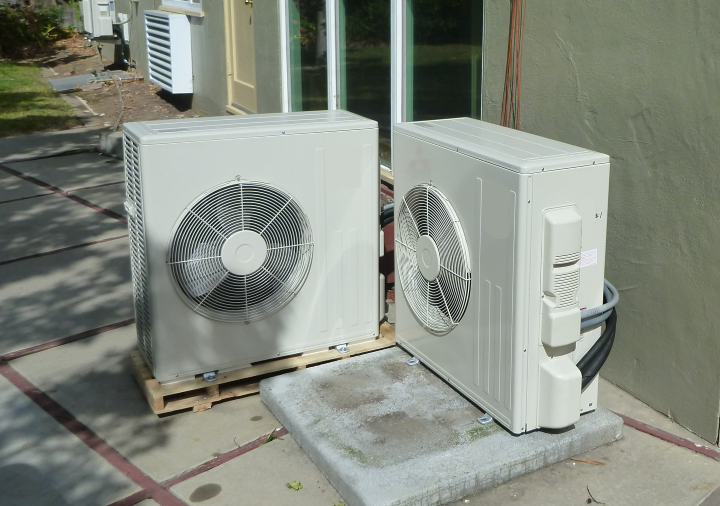 Project Title
Project Title
Central Valley Research Homes: Evaluation of Sizing and Controls Settings 2017-2018
Project Number C&S PGE 2019_1 Organization PG&E End-use HVAC Sector Residential Project Year(s) 2017 - 2019This study was a continuation of the Central Valley Research Homes (CVRH) project. The CVRH project converted four existing single family buildings in Stockton, California into unoccupied laboratory houses to study residential energy saving opportunities. Variable capacity heat pump (VCHP) systems were evaluated in three of the laboratory houses in 2014, 2015 and 2016 (ET Project #s ET14PGE8761 (https://www.etcc-ca.com/reports/variable-compressor-speed-heat-pumps) and PGE 2018_3 (https://www.etcc-ca.com/reports/central-valley-research-homes-evaluation-ducted-and-ductless-configurations-variable)). This 2017 study continued the VCHP evaluation with a focus on two questions that were not addressed in the prior studies:
1) How important is VCHP sizing relative to the building heating and cooling loads? Some industry guidance suggests that oversizing is acceptable since capacity can be varied to meet loads. The prior CVRH studies have found that VCHP systems spend a substantial amount of time cycling, cycling losses are detrimental to energy performance, and oversizing may increase cycling losses.
2) How sensitive is VCHP performance to the configuration of the onboard control settings? Can energy performance be improved by modifying the control settings from the factory default? These questions relate to the reliability of U.S. Department of Energy efficiency rating test methods that override or lock out the onboard controls of VCHP systems, as well as the ability of VCHP system installers to influence field energy performance.
The 2017 study evaluated different sized VCHP systems at two houses. At each house, the VCHP systems were selected from the same product line, were configured with the same controls settings, and were identical in every way except for nominal capacity. Performance of the smaller and larger sized system was compared to evaluate sizing impacts. The smaller sized system at each house had been monitored in the 2016 study using different controls settings than were applied in 2017. Performance in 2016 and 2017 was compared to evaluate the impact of the settings adjustments.
The third house was used to conduct a head-to-head comparison of a standard single speed minimum efficiency split system heat pump to a ducted VCHP system selected, installed and controlled under close collaboration with the VCHP system manufacturer. Ductwork for both heat pump systems was fully inside the conditioned space.
Results
Sizing: Moderate VCHP oversizing up to 50% above the monitored cooling load had little or no impact on cooling energy use. Severe oversizing of more than 100% relative to the monitored heating load negatively affected heating energy use. Downsizing to a system with heating capacity closer to the monitored heating load reduced extrapolated seasonal heating energy use by more than 20% at both houses. There may be tradeoffs in sizing for optimal energy use vs. comfort due to interactions with the VCHP control programming. The oversized VCHP systems were better able to maintain indoor temperatures near the thermostat setpoint than the systems that were sized very close to the monitored load.
Controls: VCHP controls settings affect energy performance, and the factory default settings are not necessarily optimal. Modifying the settings from the factory default produced minor reductions of 6% to 7% of cooling seasonal energy use, and larger reductions of 15% to 23% of heating seasonal energy use. The most impactful adjustment was a combination of two settings changes that increased indoor airflow at one of the houses, resulting in an 18% reduction in seasonal heating energy use.
The ducted VCHP system that was designed, configured and controlled in collaboration with the manufacturer demonstrated a reduction in energy use relative to the single speed minimum efficiency heat pump of 31% in cooling season and 27% in heating season. The reduction in energy use was substantially larger than predicted by the relative SEER ratings (4%) or the relative HSPF ratings (10%) of the two systems.
Key Project Takeaways
Proper sizing remains an important consideration in VCHP system design. Moderate oversizing was not observed to significantly impact cooling energy use, but severe oversizing was found to increase heating energy use by more than 20%. Manual J load calculations overestimated the laboratory house cooling loads at the design condition by 24% to 50% and heating loads by 100% at both houses. Sizing VCHP systems larger than necessary to meet the Manual J loads is likely to result in severe oversizing.
VCHP control settings influence energy performance. This suggests that efficiency test methods that involve overriding the onboard controls are unlikely to produce a reliable representation of energy performance. The current AHRI test methods require VCHP control overrides, and the CVRH studies have found little correlation between SEER and HSPF ratings and the installed energy performance of VCHP systems in these California homes.
Manufacturer documentation for the VCHP models tested does not provide system installers with the information needed to make informed decisions regarding controls settings. More explicit descriptions of the effect of each setting, and general guidance to assist installers in identifying and implementing the optimal control scheme are needed.
VCHP systems are capable of providing large reductions in energy use relative to single speed systems. Improved efficiency test methods are needed to reliably identify the VCHP systems with superior real-world performance.
